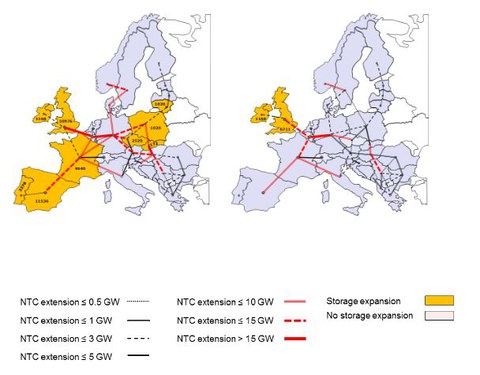Eltramod
Electricity Transhipment Model
| Model Purpose | Main characteristics |
|---|---|
|
|
Exemplary results
Influence of RES feed-in obligation on investments in new grid and storage capacities
- Feed-in priority for RES significantly influences investments in NTC and storage capacities
- Regardless of the presence of feed-in obligation, investments in additional NTC are needed
- In the midterm grid expansion, rather than storage expansion, is necessary to integrate the increasing RES generation
- The requirement for additional storage capacity becomes important beyond 2040 when the penetration of RES will reach approx. 80%
|
RES feed-in obligation (every unit of available RES needs to be feed-in) |
RES curtailment (the surplus of RES can be curtailed) |
|---|---|
Exemplary References
Energy System Analysis Agency (ESA²): Shaping our energy system - combining European modelling expertise, Brüssel, 2013.
Gunkel, D.; Kunz, F.; Müller, T., von Selasinsky, A.; Möst, D.: Storage Investment or Transmission Expansion: How to Facilitate Renewable Energy Integration in Europe?. Tagungsband VDE-Kongress Smart Grid - Intelligente Energieversorgung der Zukunft, 2012.
Müller, T.: Influence of increasing renewable feed-in on the operation of conventional and storage power plants. 1st KIC InnoEnergy Scientist Conference, Leuven, 2012.
Müller, T.; Gunkel, D.; Möst, D.: Renewable curtailment and its impact on grid and storage capacities in 2030, Enerday Conference, Dresden 2013.
You can download a short description of Eltramod here.

